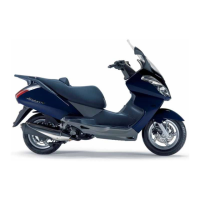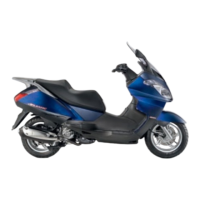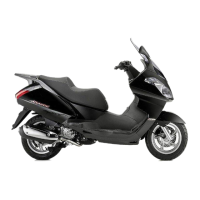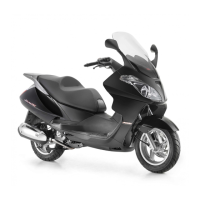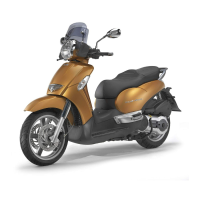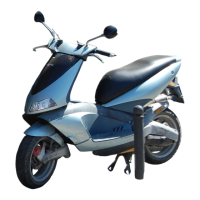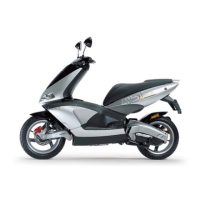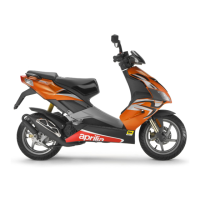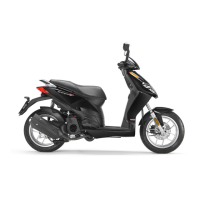Do you have a question about the APRILIA ATLANTIC 500 - 2002 and is the answer not in the manual?
How to lock the steering and a critical safety warning.
Explains the meaning of hazard warning, caution, and note symbols.
Details risks from exhaust fumes, fuel, and hot engine parts.
Toxicity and flammability risks of brake fluid and coolant.
Risks from battery gases and corrosive sulfuric acid.
Emphasizes rider skill, training, and obeying road rules.
Visual guide showing where warning labels are affixed on the vehicle.
Manufacturer data, emissions, and nitrogen gas safety.
Tire safety, certification label, and general riding advice.
Battery service, acid hazards, and explosion risks.
Emphasizes the importance of safe driving for rider and vehicle.
Importance of safety gear, proper attire, and meeting legal obligations.
Rider fitness, practicing in safe areas, and riding in traffic.
Following traffic signs, avoiding obstacles, and proper rider behavior.
Warnings against modifications and riding in poor conditions.
Maintaining focus, checking fluids, and fuel levels regularly.
Handling a stuck throttle and post-accident vehicle checks.
Proper braking, speed control, and throttle usage.
Precautions for rain, wet, slippery, or rough roads.
Adhering to speed limits, signs, and making oneself visible.
Importance of wearing appropriate, visible protective gear and a helmet.
Identification of speedometer, tachometer, LEDs, and displays.
Meaning of direction indicators, oil pressure, and fuel reserve lights.
How to read speed, mileage, and immobilizer status.
Interpretation of ABS, coolant temp, and EFI warning lights.
Using the engine stop switch and starting the vehicle.
Overview of display elements and how to cycle through functions.
Cycling through display modes like temperature, speed, fuel.
Procedures for resetting average speed, fuel consumption, and stopwatch.
How to view ODO, TRIP modes, and reset trip values.
Risks of gasoline and safe refueling practices.
Safety warnings for handling oil and proper disposal methods.
Recommended intervals for checking and changing oils.
Separate hydraulic circuits and importance of brake system checks.
Care for brake discs, pads, and fluid replacement schedule.
Steps to check the brake fluid level against the MIN mark.
Reasons for low fluid, checking pad wear, and braking effectiveness.
Checking coolant level and risks of ingestion or contact.
Coolant mixture benefits and hazards of removing a warm expansion tank plug.
Steps to check coolant level in the expansion tank.
Safe topping up procedure and what to do if coolant is used quickly.
Tire type and importance of checking inflation pressure.
Checking tire wear, condition, and when to replace.
Importance of professional tire service and checks.
Required tread depth and warning about vehicle overload.
Emphasizes the necessity of pre-ride checks for safety.
Detailed checklist for essential pre-ride vehicle inspections.
Avoiding starting in enclosed areas due to carbon monoxide.
Steps before starting and the meaning of oil pressure/EFI lights.
How to operate the starter safely and avoid damage.
How to start, begin moving, and what the oil pressure light signifies.
Warming up the engine and its effect on emissions and fuel.
Basic riding, passenger safety, and rearview mirror usage.
How to inspect brake pads for wear.
Visual inspection of brake pads and discs for wear.
Guidelines on when brake pads need to be replaced.

